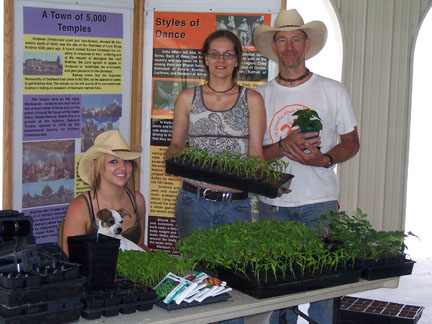As part of a greening world, the Temple is committed to actively reducing our energy usage and carbon footprint. A guiding vision of the Krishna Consciousness movement is “Simple Living, High Thinking.” This sentiment is an expression of the values of the Vedic culture that our spiritual lineage arose from : a simple, village-based way of life in India that required no petroleum and generated almost no pollution. Now we have adapted to life as it comes to us in 21st-century America, but we can do our best to live close to the earth — by using less energy, recycling, growing our own vegetables, and so on.
In this age, endeavoring to live simply may not always be so simple, but it is gratifying. As we slowly turn this earth back into a garden, earth-friendly living is what Krishna wants of all of us.
Buildings
We will be making energy-efficient changes in the main temple building and residential buildings, as well as constructing a “green” addition to increase our residential space. Elements will include
- Well insulated and highly energy efficient
- Use of solar, geothermal or other renewable energy
- Use local and low-carbon materials in construction

Grounds
Future projects include water-conservative landscaping to make the property more accessible, convenient and enjoyable for the public, improve wheelchair accessibility, put up fences that are attractive and functional, making paths, and overall to complete our Temple grounds and animal park.
We are have two organics gardens, 3/8 acres total, which we’d like to expand. We are committed to producing the bulk of our produce, with excess to sell. Of our many volunteers, kids and teens can be taught to grow their own food, to plant, till, irrigate and harvest.
Overall, the property is becoming a permaculture model for all to enjoy, especially kids, as they learn about raising animals, growing edible plants, ecology, and sustainability.
Permaculture landscaping has lots of advantages, including reduced water use, making use of edible plants, beauty and spatial division, modeling a more sustainable pattern of land use for our more than 50,000 annual visitors.
